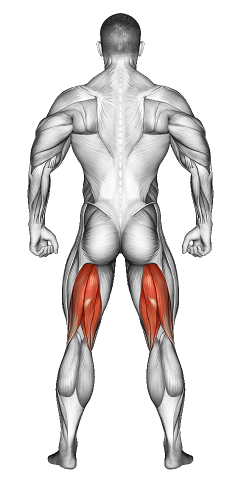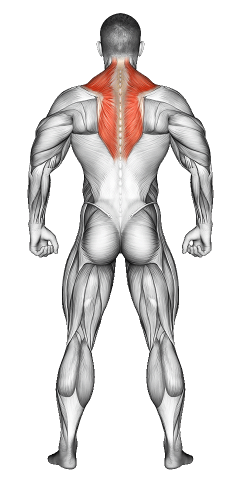Downward Dog Stretch: Video Tutorial & Stretch Guide

Written By: Claude Michael
Updated: Dec 18, 2024
| Workout | Downward Dog Stretch |
| Primary Muscle Group | Hamstrings |
| Secondary Muscle Group | Shoulders,Calves |
| Equipment Required | Mat |
| Force Type | Bodyweight |
| Mechanics | Stretching and Stability |
| Exercise Type | Flexibility |
| Difficulty | Beginner to Intermediate |
Downward Dog Stretch: Video Tutorial & Stretch Guide
- 1.Downward Dog Stretch: Muscle Groups
- -1.1Primary Muscle Group
- -1.2Secondary Muscle Group
- 2.Downward Dog Stretch: Step-by-Step Guide
- 3.Downward Dog Stretch: Overview
- 4.Downward Dog Stretch: Benefits
- 5.Downward Dog Stretch: Pro Tips & Advanced Techniques
- 6.Downward Dog Stretch: Progression Plan
- 7.Downward Dog Stretch: Frequently Asked Questions (FAQs)
Secondary Muscles Group
Downward Dog Stretch: Step-by-Step Guide
- Step 1: Start on all fours on your mat. Place your hands shoulder-width apart and spread your fingers wide. Position your knees right under your hips. This setup gives you balance and prepares you for the stretch.
- Step 2: Lift your knees off the ground and push your hips up. Aim for an upside-down “V” shape with your body. Keep your arms straight but soft at the elbows—don’t lock them. Focus on lifting those hips high.
- Step 3: Lengthen your spine by pressing your chest toward your thighs. Relax your neck and let your head hang naturally. Imagine a straight line from your hands all the way up to your hips.
- Step 4: Press your heels toward the floor to stretch your hamstrings and calves. Don’t worry if your heels don’t touch the ground—just go for that stretch. Keep your knees slightly bent if your hamstrings feel tight, then work on straightening them gradually.
- Step 5: Hold the position for 15-30 seconds and breathe deeply. Inhale through your nose, then exhale through your mouth. With each breath, let your body relax more into the stretch. Feel the length in your spine and the stretch in your legs.
- Step 6: Lower your knees back to the mat to release the stretch. Give yourself a moment to shake out your arms and legs, then repeat if you’d like to go deeper into the stretch.
Downward Dog Stretch: Overview
The Downward Dog stretch works your hamstrings, calves, shoulders, and upper back. It builds flexibility, improves posture, and opens up tight muscles. This stretch is great for all levels, giving your entire body a refreshing stretch and a boost in stability.
Downward Dog Stretch: Benefits
- Downward Dog gives you more than just a stretch:
- Relieves Upper Body Tension: Loosens up your shoulders, neck, and back
- Increases Flexibility: Stretches hamstrings and calves deeply
- Strengthens Core and Spine: Builds core stability and helps keep your spine straight
- Boosts Posture and Balance: Helps you stand taller and move with ease
Downward Dog Stretch: Pro Tips & Advanced Techniques
- Keep Your Spine Long: Press your chest back toward your thighs to get the most stretch in your back. Length in the spine is key.
- Relax Your Neck and Head: Let your head hang naturally between your arms. This keeps you from adding tension to your neck.
- Don’t Force Your Heels Down: Work toward pressing your heels down, but don’t push it. Your flexibility will improve with time.
- Adjust Hand and Foot Position: Move your hands and feet as needed to find a comfortable stance. Adjustments can make the stretch feel even better.
- Breathe Deeply: Use your breath to relax into the stretch. Inhale as you hold the pose, exhale to release tension, and let each breath help you go deeper.
Downward Dog Stretch: Progression Plan
Beginner
Intermediate
Advanced
Downward Dog Stretch: Frequently Asked Questions (FAQs)
What muscles does Downward Dog stretch?
+Downward Dog stretches your hamstrings, calves, shoulders, and upper back, while also engaging your core.
Can I add Downward Dog to any workout?
+Yes! This stretch fits into warm-ups, cooldowns, or any stretching routine. Use it to open up tight areas and reset after intense exercises.
Can Downward Dog improve posture?
+Definitely. By stretching your back, shoulders, and hamstrings, Downward Dog supports better posture and helps reduce the hunched-forward position caused by sitting.
How often should I do Downward Dog?
+Practice it 2-3 times a week, or even daily if it feels good. It’s safe and super beneficial with regular practice.
What mistakes should I avoid?
+Don’t round your spine or push your heels too hard. Keep your core engaged, take your time, and breathe deeply to get the full benefit of the stretch.
Share
Don’t Wish for It, Work for It – Join the FlexXP Newsletter Today!
Thank you for signing up for the FlexXP Newsletter!
This site is protected and the Google Privacy Policy and Terms of Service apply.

